San
Diego Jewish World
Sunday Afternoon,
June 24, 2007
Vol. 1, Number 55
|
Archives Community Calendar HOME Jewish Directory Jewish Grapevine Jews in the News News Sleuths |
One year later: Israel's government tells its efforts
to win release of captives in Gaza and Lebanon
Link
to powerpoint presentation from Ministry of Foreign Affairs
JERUSALEM (Press Release)—Almost a year has passed since the unprovoked abduction of Eldad Regev and Ehud Goldwasser on the Israeli side of the Lebanese border, an action that precipitated widespread confrontation between Israel and the Lebanon-based Hizbullah terrorist organization. To date no word has been heard from the two captive soldiers, and neither their families nor the government of Israel have any knowledge of their whereabouts or their current state of health.
Two weeks prior to their abduction, on June 25, another soldier, Gilad Shalit, was abducted as well, this time on the Israeli side of the border with Gaza. His family, too, anxiously awaits news from him. Especially grave is the fact that these unprovoked abductions were carried out on sovereign Israeli territory.
|
6/24/07
SDJW Report |
Taken from their families a year ago, these captive soldiers are denied the most basic of human rights as enshrined in the Geneva Convention. In a gross breach of U.N. Resolution 1701, the terrorist organizations that carried out these abductions, and Syria and Iran who support them, behave as if these human rights are nothing more than a bargaining chip in their game of negotiation, refusing even to transmit messages to the captives from their families. International bodies who met with the captives' families have also tried to forward messages and letters, but they have been met with a negative response as well. The Israel Foreign Ministry is active in efforts to gain their release on all levels: Foreign Ministry Tzipi Livni and her fellow ministers, alongside Prime Minister Ehud Olmert, raise the issue at the highest levels in their diplomatic meetings, in Israel and abroad - as do the Foreign Ministry's director-general and other senior officials. The Foreign Ministry also assists the families of the kidnapped soldiers in their meetings, both abroad and with visiting dignitaries in Israel, in an effort to keep the cause of the abducted soldiers on the international public agenda. Israel's embassies abroad are also taking part in the effort,with emphasis on the humanitarian aspect: the families await a clear |
|
sign that their sons are alive and well. Those with influence, whether direct or indirect, on Syria and Iran are being asked to exert this influence on these countries. Thus, it is hoped, Syria and Iran, which sponsor the terrorist organizations holding the abducted soldiers, will be forced by growing international pressure to bring their influence to bear to obtain the hoped-for news and their eventual release.
Neither Israel nor any other civilized, law abiding country can accept this situation. We urge you to support us in our endeavor - to bring our soldiers home.
Statement by the President of the Security Council (17 April 2007):
"The Security Council notes with profound concern that there has been no progress on the issue of the return of the two Israeli soldiers abducted by Hizbullah on 12 July 2006 despite further intense efforts by the Secretary-General and his facilitator, and reiterates its call for their immediate and unconditional release."
From Report of UN Secretary-General on the implementation of Security Council resolution 1701 (2006):
"The return of the two Israeli soldiers abducted by Hizbullah on 12 July 2006 and a solution of the question of Lebanese citizens detained in Israel have been the focus of further intense efforts made by the facilitator appointed by my predecessor to handle these issues.
Hizbullah publicly rejected the concept of an immediate and unconditional release of the two Israeli soldiers at an early stage, insisting instead on the release of large numbers of detainees in Israel beyond the framework of resolution 1701 (2006). There were also prohibitive demands with regard to proof that the two Israeli soldiers were alive.
(Jump to continuation)
Prime Minister's Office
arranges computers for Sderot
JERUSALEM (Press Release) —The Prime Minister’s Office (PMO) and the Computer
for Every Child Project will, this week, provide 120 computers to second through
eighth grade students in Sderot, ahead of the coming summer vacation.
PMO Director-General Ra’anan Dinur said that the decision is part of the
Government’s policy to assist Sderot and its residents: “In recent months, we
made a series of decisions to aid the residents, including offering thousands of
weekend vacations in hotels and guest houses – financed by the state, providing
indirect compensation to business owners in the city and investing in
reinforcing educational institutions in the city.”
Education Ministry Southern District Director Amira Haim and “A Computer for
Every Child” official Ami Bergman also discussed the decision.
The preceding
story was provided by the Prime Minister's Office and the
Computer for Every Child Project.

A Herald in Zion.... Notes from Mevasseret Zion Dorothea Shefer-Vanson |
Reflections on Hamburg and
the grandma I never knew
MEVASSERET ZION, Israel—A few years ago, together with my sisters and other relatives, I visited Hamburg, the city where my ancestors had lived for many generations until exiled by the Nazis. We were there to attend the presentation of the book ‘Aber Seid Alle Beruhig’ containing the letters written by my grandmother before she was deported from Hamburg in 1942.
Although my father escaped from Germany, my grandmother did not, and she eventually perished in Theresienstadt. Left on her own and caught ‘like a mouse in a trap,’ as she put it, she wrote letters. They were her lifeline to the world. In the first few years of the war she managed to correspond with her children via a roundabout route. My father kept the letters, but ‘forgot’ all about them.
I stumbled on the letters about ten years before and felt that they ought to be published, but that was not easy. Eventually, we got in touch with Juergen Sielemann of the Hamburg State Archives. He has worked there for forty years and regards it as his mission in life to prevent the horrors of the Nazi rule from being forgotten. He is, of course, not Jewish.
Juergen Sielemann felt that the letters should be annotated and supplemented by a detailed account of what happened in Germany, and especially in Hamburg, during the Nazi period. This labour of love took him almost ten years as he could do it only in his spare time. It was he who made contact with Hamburg’s Landeszentrale fur Politisch Bildung, which undertook to publish the book.
And so, ten years after my grandmother’s letters had been discovered, and sixty years after she was murdered, ‘her’ book was published. The title, roughly translated as ‘But Please Don’t Worry,’ is taken from one of the phrases she used and reflects the general tone of the letters. She tried very hard to present a brave and cheerful front to her relatives and not to give them cause for concern. In addition to the letters, which are both touching and inspiring, the book contains Juergen Sielemann’s meticulous account of the developments which led to the eventual deportation of the Jews of Hamburg. The book is in German but is currently being translated into English and will, I hope, eventually be published.
Juergen Sielemann also organised the installation of a Stolperstein (‘tripping stone’) in front of the house where my grandmother lived. Before the unveiling of the plaque, which bears my grandmother’s name and dates of birth and death, he took our little group, together with about forty Hamburg residents, on a walking tour of the Grindel, the neighbourhood where most Jews had once lived, pointing out my grandparents’ house and other buildings of interest for the Jewish community. Contrary to my expectations, many of Hamburg’s fine old buildings are still standing. The Allied bombing of the city apparently left the area where my grandparents and most of the Jewish population lived relatively untouched.
I had been asked to say a few words about my grandmother at the book presentation that evening. Initially, this request struck me as somewhat odd, considering that I had never known my grandmother. But when I started thinking about what I was going to say I realised that I did know her in a way, through her letters. And now many more people would be able to read about her too. The letters of this woman, who had to face her fate on her own, can serve as a mouthpiece for others like her, and the Hamburg authorities deserve credit for being
The
foregoing article was reprinted from the AJR Journal (Association of
Jewish Refugees) in England.
|
Commentary |
_________________________________________
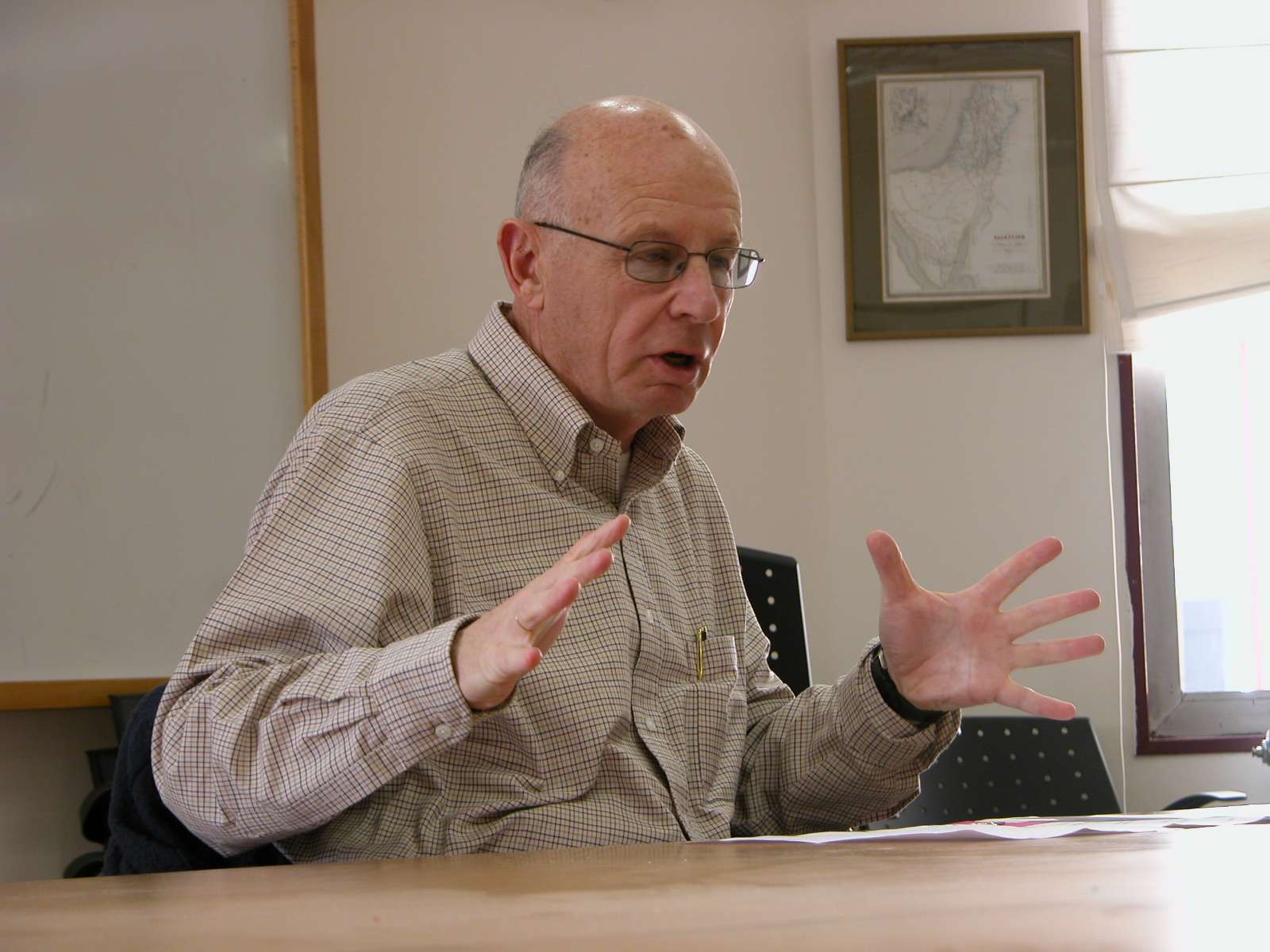
Letter from
Jerusalem
_________________By Ira Sharkansky_______________________
JERUSALEM—The demands and reports are piling up. Commentators and opposition politicians are clamoring that Israel should invade Gaza and wipe out Hamas. Or at least cut off the supplies of fuel, electricity, water and food, and add to their suffering. Reports are that the Israeli air force is practicing long distant flights in preparation for the big thing in Iran. Will it take out only the nuclear facility, or also go after the missiles likely to send conventional explosives toward Israel in retaliation? Every second or third day another expert predicts that this summer will see another war on the northern border, involving Hezbollah or even Syria. Doo sayers report that the IDF has not corrected any of the mistakes apparent the last time: bomb shelters across the north are still in miserable shape, and fighting units still do not have all the equipment they will need.
Meanwhile, the government does not seem to be doing much in any of these directions. Headlines deal with a committee meeting to select some new justices for the Supreme Court, and the likelihood that the prime minister will shuffle some of his colleagues among the ministries. There will be a meeting in Egypt where the prime minister will pass on several hundred million dollars held in escrow to Mahmoud Abbas, perhaps make some other gestures to strengthen him in the eyes of the Palestinians, and maybe some demands that Abbas move against Palestinian violence in order to give Israelis more confidence in him.
There is so much to do, and so many critics in Israel and overseas demanding steps in the direction of war (mostly from the right) and accommodation (mostly from the left).
There are good reasons for doing nothing from among the heroic options being urged.
-
Waiting gives the other sides (and there are several of them, often not acting in concert) time to make a mistake and give Israel a more justifiable reason for taking action. If the IDF moves against Gaza, Hezbollah, or Syria, it will help if there is understanding or even support from the United States and Europe. No other country counts for much.
-
Much of the criticism of last year's war deals with the onset of the operation with inadequate preparation, ranging from meager training of the troops, and especially the reserves, to inadequate equipment. At least some training and equipping is occurring. It is never enough for critics who want all the resources for their need of the moment. We may never see if it is adequate, especially if the doom sayers are mistaken in their prophecies.
-
Small actions may be better than big. Letting Hamas dangle in Gaza with a minimum of resources, and being at the focus of Arab as well as western criticism, may dissuade it from violence, at least for the time being. Postponing confrontation is not all that wrong. If it comes, we may be better prepared, with more convincing reasons for what we do. In the north, the Lebanese army is doing our work. It is not tackling Hezbollah, but is going after Palestinians. It may get to Hezbollah if we give it a chance.
-
An attack on Iran should be a option only in extremis. It would assure Israel a great deal of criticism, and a rain of missiles in return. They may only carry conventional explosives, but I hope they do not fall on my house. Optimists see the impact of economic sanctions. They may not move the Iranians from a nuclear option immediately, but there is a willingness to increase their severity. Sanctions and a few goodies are working on North Korea. Force has not proved useful in Iraq. It is wise to put off an apocalyptic action as long as possible.
There remain unresolved injustices against Israel. Three soldiers are still being held in Gaza and Lebanon, assuming they are still alive. The President of Iran and the men in charge of Gaza are calling for our destruction. Syria is rearming with Iranian money and Russian equipment. Hezbollah claims to have replenished its supply of missiles, with 20,000 now ready to send in our direction.
Life is worrisome. Yet it is time to remember one of the cardinal rules of making public policy: do not make things worse.
George W. Bush violated that rule when he sent his military into Iraq. The United States is large, rich, and far away from the sources of threat. Americans can view the European Union as a bunch of small countries, and dismiss their criticisms as mere nuisance. If the anti-Americanism heats up, there is always the veto in the United Nations Security Council.
Ehud Olmert has to do better.
Features |
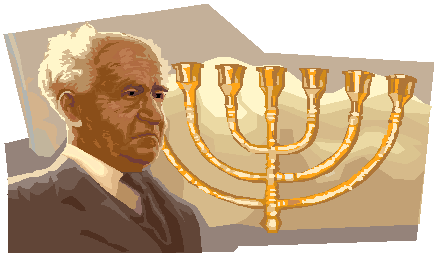 Jews
in the News
Jews
in the News
---------------------------------------------------------------------------------------------------------------
Like you, we're pleased when members of our community are
praiseworthy, and are disappointed when they are blameworthy.
Whether
it's good news or bad news, we'll try to keep track of what's being said in
general media about our fellow Jews.
Our news spotters are Dan Brin in Los Angeles, Donald H. Harrison in San Diego,
and you. Wherever you are, if you see a story of interest, please send a
summary and link to us at sdheritage@cox.net
and we'll acknowledge your tip at the end of the column.
To
see a source story click on the link within the respective paragraph.
______________________________________________________________________________________________
*Roy Beck runs a grassroots organization called NumbersUSA which opposes the
Immigration Bill compromise, and is good at mobilizing its estimated 419,000
members to call or picket members of Congress depending on the occasion.
Now Beck is focusing on the "Flippin Fifteen," 15 U.S. senators who voted
against the compromise but are considering voting for it with amendments.
One of them is U.S. Sen. Barbara Boxer (Democrat, California). The
story by
*An independent candidacy by Mayor Michael Bloomberg of New York City would be a positive development in the presidential race, according to Washington Post columnist David Broder. His column is in today's San Diego Union-Tribune.
*An Israel Defense Force unit arrested the founder of Hamas' military wing in the West Bank, Saleh Aruri, as Palestinian President Mahmoud Abbas issued orders for all Non-Governmental Organizations (NGOs) to re-register, in what is seen as a harbinger of a crackdown on Hamas-affiliated charities. The Associated Press story is in today's San Diego Union-Tribune.
*Austria's President Heinz Fischer spoke at the funeral of Kurt Waldheim, the former United Nations secretary general who became president of Austria notwithstanding evidence that he served with Nazi forces that executed Jews. Few foreign diplomats attended the ceremony for a man whom the United States had banned from visiting because of his Nazi past. The Associated Press story is in today's San Diego Union-Tribune.
*The case against and conviction of I. Lewis 'Scooter' Libby, former chief of staff to Vice President Dick Cheney, is "absurd" and probably will be reversed on appeal. That is the opinion of guest columnist Christopher Hitchens, whose analysis is in today's San Diego Union-Tribune.
*Robert Satloff, executive director of the Washington Institute for Near East Policy, believes Israel should completely disengage from Gaza, turning over outside responsibility for the strip to Egypt. His commentary is in today's San Diego Union-Tribune. A related commentary by James Zogby, president of the Arab American Institute, says the situation leading to development of armed gangs and thugs in Gaza was the fault of Israel and the United States. In the newspaper's letters-to-the-editor section, there were pro-Israel letters from Linda Cooper, Sanford Lakoff and Philip Borkat and an anti-Israel, pro-Hamas letter from Marshall Foreman.
________________________________________________
The Jewish Grapevine
 ------------------------------------------------------------------------------------------------------
------------------------------------------------------------------------------------------------------AROUND THE TOWN—Barbara Bry, the journalist who helped to found the Voice of San Diego news website, has moved on to another exciting project with her husband, Neil Senturia. Together they host and produce the radio program "I'm There for You Baby, the Entrepreneur's Guide to the Galaxy," in which their focus is on building and growing a successful company. Among members of the Jewish community who have been interviewed on the show are Debi Akin, co-founder and co-owner of D.Z. Akins; Rabbi Philip Graubart of Congregation Beth El, who speculated on the question "Is God an Entrepreneur?"; Dr. Ivor Royston, the managing partner of Forward 'Ventures; and Leo Spiegel, the managing partner of Mission Ventures. Archived interviews may be accessed by clicking on their underlined names in this item. The show is broadcast from 1-2 Saturdays on CASH 1700-AM.
|
Regional and Local |
Land of Milk and Honey provides cinematic feast
By Sandy Golden
SAN DIEGO—A new movie, The Land of Milk and Honey, focuses on a remarkable octogenarian, Eliyahu Gamliel, whom director Zeji Ozeri describes as “our grandfather, everybody’s grandfather.”
Although not everyone in Israel knows his name, everybody knows the works of
this songwriter, especially the song about Israel after which the movie received
its Hebrew name, Eretz Zavat Chalav U’Devash.
“When I came to this land, and went to live on a kibbutz,” he tolds Ozeri in an
on-screen interview, “ I made flutes, all sizes, from all kinds of materials (–I
still do-some take five minutes, some take two hours ) —and on Fridays, I taught
dance, and we sang and sang. It was then that I gave myself the name of Gamliel,
the famous Rabbi.”
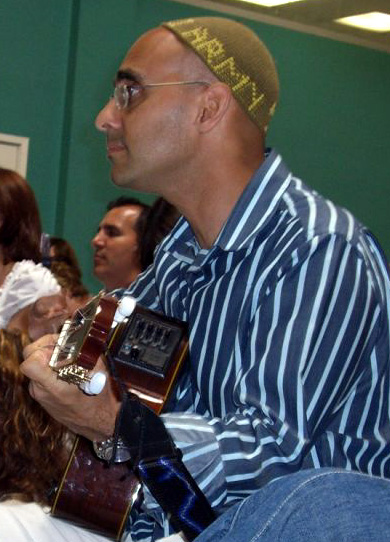 Ozeri, who now lives and teaches in San Diego, had learned the song as a child,
as have subsequent generations of Israeli children. He had expected to do a
sit-down interview with Gamliel, but that would have been out of character for
the man whose love for the land compels him to roam it.
Ozeri, who now lives and teaches in San Diego, had learned the song as a child,
as have subsequent generations of Israeli children. He had expected to do a
sit-down interview with Gamliel, but that would have been out of character for
the man whose love for the land compels him to roam it.
So, instead, Ozeri and a photographer trailed this free spirit, even on one of the hikes he still leads every Shabbat. Young and old follow him on his communion with nature, with “The Land” He knows the soil, he knows every tree, every leaf.
“Doesn’t it bother you”, Ozeri asked Gamliel, “that many people do not even know you wrote The Land of Milk and Honey? …
do not even know you are alive”? Zeji Ozeri
“Why should it bother me? That’s not important… I’m a self-taught student. G-d gives everyone a gift. The gift I have, is to write songs –it’s to make people happy. .. That is what’s important. …Generations come and go, but the songs have long lives---like the trees –the oak.”
This endearing philosophy won full-throated approval in Spanish, English and Hebrew from a San Diego crowd that attended the movie’s premiere at the Lawrence Family Jewish Community Center, Jacobs Family campus, on Wednesday, June 20, upon the invitation of the Spanish-speaking Ken Jewish Community.
Preceded by a performance by the local dance troupe Lehatjil, the zestful movie was praised by audience members for its portrayal of not only Israel’s physical landscape, but of its ruach, or spirit.
Interspersed throughout the film were scenes depicting animals grazing, young children dancing, groups of adults singing, greenhouses, lush vegetation, trees, plants, and open markets with fruits and vegetables overflowing –truly --the “Land of Milk and Honey."
This film has already been entered in several foreign film festivals. It is the hope and dream of the producers that when and wherever it is seen, people will see what Israel is all about –the openness of its people and its sense of family and of community.
photo credit: Sandi Masori
(Return to top)
|
|

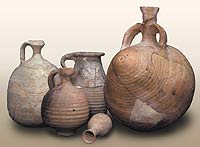
A fragment of a scroll showing a passage from Deuteronomy; jugs and juglets
(Israel Antiquities Authority photos)
SAN DIEGO (Press Release)—The San Diego Natural History Museum’s exhibition Dead Sea Scrolls opening Friday, June 29, is the largest, longest, most comprehensive ever assembled in any country. Spanning two floors and 12,000 square feet, 27 Dead Sea Scrolls—10 exhibited for the first time ever—will be on display over the course of the exhibition.
The six-month exhibition brings together materials never before exhibited together: Dead Sea Scrolls from Israel and Jordan reunited for the first time in sixty years, never-before-exhibited ancient Hebrew codices from the Russian National Library, medieval manuscripts from the British National Library, and stunning modern interpretations of the texts. Tracing the scrolls and their meaning through time, the exhibition connects the ancient world to the modern.
The Dead Sea Scrolls—objects of great mystery, intrigue and significance—are
widely acknowledged to be among the greatest archaeological treasures ever
discovered.
Exhibition highlights include:
-
Authentic Dead Sea Scrolls, fully interpreted with translation of text and background information
-
Psalms scrolls containing passages from liturgy still in use today
-
The best preserved of all Deuteronomy manuscripts containing the text of the Ten Commandments
-
A section of the Copper Scroll from Jordan, the only Dead Sea Scroll inscribed on copper
-
-
Ancient, illuminated manuscripts from the National Library of Russia
{Jump to continuation}
______________
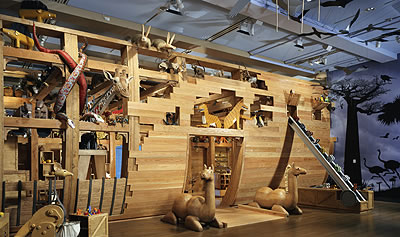


Skirball Cultural Center opens 'Noah's Ark' Tuesday
LOS ANGELES (Press Release)—The Skirball Cultural Center announces the opening of Noah’s Ark at the Skirball—an innovative, delight-filled destination for children and families of all backgrounds—on Tuesday, June 26. Inspired by the ancient flood story of Noah’s Ark, which has parallels in hundreds of cultures around the world, this indoor and outdoor attraction offers a multi-sensory, interactive experience. It invites visitors to board a gigantic wooden ark and to play, climb, build, discover, nurture, problem-solve and collaborate alongside handcrafted, one-of-a-kind animals. These range from life-sized elephants and giraffes to snow leopards, flamingos and iguanas—186 species in all.
Five years in the making and occupying an 8,000-square-foot gallery space, Noah’s Ark at the Skirball will remain on view permanently. Affirming that people must work together for a brighter future, Noah’s Ark is integral to the Skirball Cultural Center’s educational mission to explore Jewish heritage with the goal of making connections within and among families, generations and cultures.
The galleries are divided into three distinct and lively zones embodying the central themes of the Noah’s Ark story:
• Storms (meeting challenges),
• Arks (finding shelter and community)
• Rainbows (creating a more hopeful world).
(Jump to continuation)
___________________
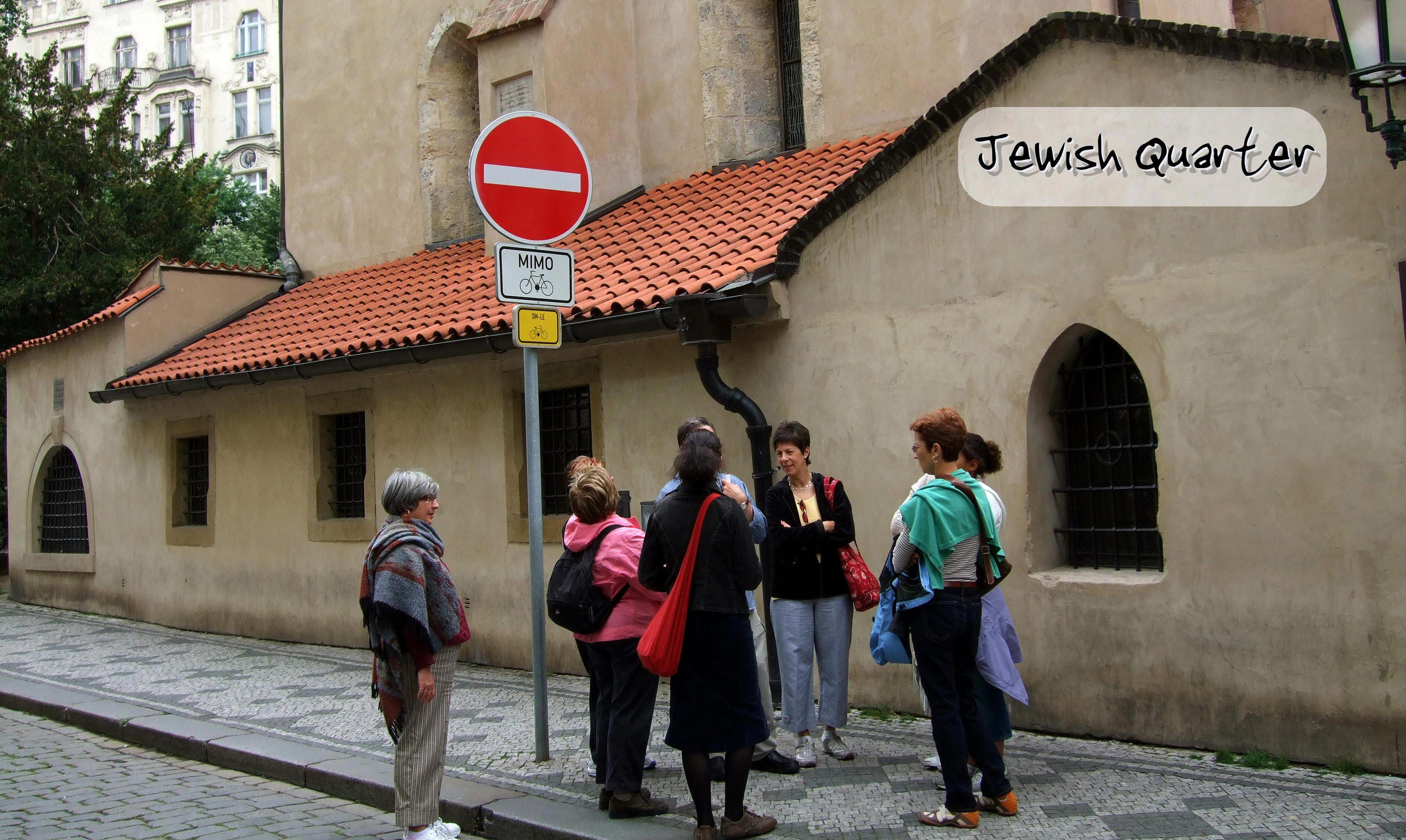
PRAGUE, Czech Republic—Unlike the standard one-building edifice called “a museum,” the Jewish Museum of Prague is comprised of four historically rich, well-preserved synagogues with hundreds of beautiful Judaic artifacts, an ancient Jewish cemetery, and an educational and cultural center. It is located in the former boundaries of the Jewish Ghetto, now part of Prague’s architecturally eclectic, and somewhat fashionable Jewish Quarter.
The origins of the Museum began in 1906, when two Jewish historians, Dr. Hugo Leaven and Dr. Augustine Stein sought to preserve valuable synagogue artifacts and materials from the turn of the century demolition of and subsequent reconstruction of the Jewish Quarter. It was officially returned to the Jewish community in 1994, and is now considered one of the best Jewish sites in Europe. A unique aspect of this collection of Judaica is that its over 40,000 exhibits and over 100,000 books, are all collected from one region-Bohemia and Moravia.
One is immediately in awe of this small circle of synagogues all in one place, with one synagogue, the Old-New Synagogue, built in the 11th century, the oldest active synagogue in Europe. One imagines the tales that could be told walking these cobblestone streets covering five centuries of Jewish life.
Also, one is struck with the myriads of tourists also taking guided tours. There were Asians, Europeans, Americans—what seemed like hundreds of people moving about inside and outside these buildings on the cramped cobblestone streets. Seeing how open the Jewish area was at first encouraging. So many people interested in Jews! The Jewish Quarter and Jewish Museum are included in many city tours. (Jump to continuation)







BASEBALL JEWS—Stories, columns and charts from the San Diego Union-Tribune
provided this information for our linking service concerning the activities and
performances of Jews in major league baseball on Saturday, June 23: When you're
a good hitter like
Kevin Youkilis of the Boston Red Sox, there's nothing sweeter than
having a good day against an opposing pitcher who is considered one of the best
in the league. For example, to get several hits off someone like Jake Peavy of
the San Diego Padres, in the Yiddish phrase, would be a machiah. Jay
Posner has the story Meanwhile, a
chart shows Youkilis with his .331 average to be the ninth best batter in
the American League. ...
Shawn Green went hitless in three trips to the plate, but the New York
Mets nevertheless prevailed 1-0 over the Oakland A's...In the batting matchup
between second baseman
Ian Kinsler of the Texas Rangers and
Brad Ausmus, Kinsler came out ahead, just as he did the
day before. Kinsler doubled,
walked twice and scored two runs as his Rangers defeated the Astros 7-2.
Ausmus singled, and drove in one run. He continues to lead Kinsler in
overall batting average, but not my much--.266 to .240... Nu, so what are we
trying to do, promote a friendly batting rivalry between these two Texas
landsmen? Sure.
Bill Shalkin
has a wonderful story in today's Los Angeles Times about the start-up of
the Israel Baseball League. Here's his lead, but you've got to read his
story: "It's an old joke, so indulge us with a chuckle, or a groan. But do
you know where to find baseball in the Bible? Why, in the very first
sentence: In the big inning …"
|
Story continuations |
(Continued from above)
On the Israeli side, I note that the Lebanese citizens captured by the Israeli Defense Force during the 2006 conflict have all been visited by the International Committee of the Red Cross and have been able to write letters to their families. I also note the readiness to solve the very few Lebanese cases, on condition that Hizbullah honours its obligations...
I have urged Hizbullah leaders to avoid disproportionate demands and protracted bargaining that cannot be considered adequate in the face of the humanitarian urgency of the cases and the clear message of resolution 1701 (2006)."
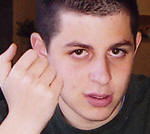 Gilad
Shalit (20) was born on August 28, 1986. He is the son of Aviva and
Noam Shalit and the brother of Yoel (23) and Hadas (16).
Gilad
Shalit (20) was born on August 28, 1986. He is the son of Aviva and
Noam Shalit and the brother of Yoel (23) and Hadas (16).
Gilad was born in Nahariya but was raised from the age of two in Mitzpe Hila in
the western Galilee. He graduated with distinction from the science class of
Manor Kabri High School. Gilad loves math and sports. He has enjoyed playing
basketball ever since he was a child, but is interested in sports in general. He
follows the different leagues and tournaments all over the world, from tennis
and basketball to cycling and athletics. If you wish to know the results of a
tournament somewhere in the world - it’s Gilad you should ask.
Gilad is a well-mannered, quiet and introverted young man. An almost permanent shy and hesitant smile light up his face. Gilad is always volunteering to help everyone.
Gilad began his military service about a year before his abduction - at the end of July 2005. Despite a low medical profile, he preferred to serve in a combat unit, followed his elder brother Yoel into the armored corps. After successfully ended his training, Gilad was guarding and ensuring the security of the settlements around Gaza when he was abducted by terrorists.
Since the attack at Kerem Shalom on Sunday, June 25, 2006, Gilad has been held in the Gaza Strip by Hamas.
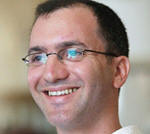 Ehud
(Udi) Goldwasser (31) was born in Nahariya on July 18, 1975. He is
the son of Miki and Shlomo and elder brother of Yair (26) and Gadi (23). He
married Karnit 10 months before his abduction.
Ehud
(Udi) Goldwasser (31) was born in Nahariya on July 18, 1975. He is
the son of Miki and Shlomo and elder brother of Yair (26) and Gadi (23). He
married Karnit 10 months before his abduction.
Udi is a graduate of the science class in the Amal Comprehensive High School in Nahariya. He served in the combat battalion Zabar Givati. After his military service he toured Australia alone on a motorcycle for half a year. Later, he completed his preparatory studies in the Technion and went on to study environmental engineering.
Udi is a kind and much loved person. He is considerate of other people’s opinions even if they oppose his own. It’s fun being in his company. He is a loving and caring person, always ready to offer a helping hand in any situation. He is a man of principles and values, knowledgeable in many subjects. He loves movies, music and spending time with his friends. A motorcycle buff, he has encyclopedic knowledge of all models. As a child he sailed the seas with his father, and has recently got his skipper license for sailing yachts and was planning to sail abroad.
Conservation of the environment is of the utmost importance to Udi. Indeed, he joined a Green group to help clean our nature reserves. Udi loves animals, and although he suffers from a mild fur allergy, he lives with two cats and lovingly adopted an abandoned and injured dog he found in the street. Over the last few years he has developed a great interest in photography. He spends much of his spare time taking pictures of scenery and nature in Israel and abroad. Lately, his hobby has become a profession having begun to take on projects as a photographer.
On July 12, 2006 Udi was abducted to Lebanon after Hizbullah attacked his military patrol.
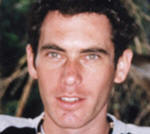 Eldad
Regev (26) was born and raised in Kiryat Motzkin. He is the son of
Zvi and the late Tova Regev, and brother of Benny, Ofer and Eyal.
Eldad
Regev (26) was born and raised in Kiryat Motzkin. He is the son of
Zvi and the late Tova Regev, and brother of Benny, Ofer and Eyal.
Eldad completed his secondary education at the Yeshiva High School in Kiryat
Shmuel. He excelled in biology and passed all his matriculation exams with ease.
In spite of his mother Tova's untimely death when he was in the 12th grade,
Eldad decided to serve in a combat unit and volunteered for the elite Givati
infantry brigade. After his army service, like most of his friends, he traveled
to the Far East. On his return he started to work while at the same time
enrolling in Bar Ilan University's pre-law preparatory course with the aim of
being accepted to the university's law faculty.
One of the qualities that makes Eldad so special is the kindness of his heart – never hesitating to donate and offer aid to anyone in need. Eldad made many friends throughout high school and during his army service, all of whom can attest to his fine qualities.
Among Eldad’s hobbies are football (last year he passed a coaching course - he is a fan of Maccabi Tel Aviv football team), music and books. A fanatic football fan, before being called up for reserve duty Eldad closely followed the World Cup games. He also went to the concert given by Roger Water (of Pink Floyd) in Kerem Shalom.
Eldad was called up for military reserve duty after completing his exams at the preparatory course in Bar Ilan University. Three days before his abduction he visited his family and participated in the annual memorial for his mother. Later, he watched the last game of the World Cup between Italy and France. The following day he returned to the complete the remainder of his reserve duty.
On July 12, 2006 Eldad was abducted and taken to
Lebanon after Hizbullah attacked his military patrol.
(Return to top)
(Continued from above)
Ancient Qumran: A Virtual Reality Tour of the archaeological site of Qumran and the caves in the Museum’s giant-screen Charmaine and Maurice Kaplan Theater (included with exhibition admission)
-
Authentic artifacts from the ancient site of Qumran, fully interpreted, incorporating the latest scholarship and scientific research
-
Modern science at work through DNA analysis, Carbon-14 dating and other scientific methods used to piece together the Dead Sea Scroll puzzle
-
Panoramic photography exploring the geographical similarities between San Diego county, Israel and Jordan
-
Modern interpretations of the text from Ethiopia and St. John’s University in Minnesota
-
The original excavation equipment used in the 1950s
-
A bilingual audio tour of the exhibition (included with admission)
To ensure preservation of the 2000-year-old parchment, the Israel Antiquities Authority only allows scrolls to be exhibited for a three-month period. The Museum has been granted the unusual opportunity for a six-month exhibition with 12 scrolls displayed for the first three months and an additional 12 in the last three months. In addition, three Dead Sea Scrolls from Jordan will be on display throughout the course of the exhibition.
The Dead Sea Scrolls were initially discovered by Bedouin herders and then by archaeologists between 1947 and 1956 in 11 caves near Khirbet Qumran, on the northwestern shores of the Dead Sea in Israel. Thousands of fragments were discovered and pieced together into over 900 separate documents including biblical books, hymns, prayers, and other important writings.
The Dead Sea Scrolls date from 250 BCE to 68 CE. Among them are some 230 biblical manuscripts representing nearly every book in the Hebrew Bible; more than 1000 years older than any previously known copies. There are also apocryphal manuscripts (texts excluded from the biblical canon) previously known only in translation or not at all.
Most scholars believe the scrolls were copied and composed by a group that broke away from mainstream Judaism to live a communal life at Qumran. This group, known to us from ancient writers, saw themselves as the "true Israel" and viewed those living in Jerusalem, including the priesthood at the Temple, as corrupt. The sectarian scrolls—non-biblical texts—reflect a wide variety of literary genres: biblical commentary, religious legal writings, liturgical (prayer) texts, and compositions that predict a coming apocalypse. They reveal the fascinating transition between the ancient religion of the Bible and Rabbinic Judaism and Christianity.
.When the Romans invaded Qumran around 68 CE, the community hid their manuscripts in nearby caves. Their brand of Judaism did not survive the destruction, though many of their practices made their way into both Judaism and Christianity.
The Dead Sea Scrolls are widely acknowledged to be among the greatest
archaeological treasures linking us to the ancient Middle East, and to the
formative years of Rabbinic Judaism and Christianity.
For more information, contact
scrolls@sdnhm.org.
The preceding story was provided by the
San Diego Natural History Museum
(Return to top)
Noah's Ark...
(Continued from above)
The Noah’s Ark galleries were designed by Seattle-based Olson Sundberg Kundig Allen Architects (OSKA), in consultation with the Skirball’s renowned architect, Moshe Safdie. They feature interactive exhibits and experiences conceived by an in-house Skirball team, with Marni Gittleman as exhibit developer. The lofty ark spaces are populated with hundreds of fanciful animal puppets and figures, many of them kinetic. These have been created by Brooklyn-based designer/puppeteer Chris M. Green and by OSKA principal Alan Maskin, in conjunction with the fabrication house Lexington.
Outdoors, the Noah’s Ark experience continues in a rustic arroyo garden with narrow paths and wooden bridges, featuring a rainbow mist installation developed by Safdie in partnership with MacArthur prize-winning environmental artist Ned Kahn. In addition, performances and special activities will be presented regularly in an adjacent 350-seat amphitheater.
“The Skirball Cultural Center was founded as a tent of welcome, where visitors of all ages and walks of life feel at home and part of a community,” says Dr. Uri D. Herscher, Founding President and CEO of the Skirball Cultural Center. “With the opening of Noah’s Ark at the Skirball, we are honored to offer a safe harbor—an ark—for children and families, a place that offers them a joyful, meaningful experience like no other.”
Herscher continues, “The ancient flood story communicates a cogent message that our world desperately needs at this time—we must collaborate to survive and thrive, learn from the past and appreciate the gift of new beginnings.”
Noah’s Ark at the Skirball is conceived as a journey, taking visitors on an ark voyage from a stormy world to dry land. Visitors are welcomed into a pre-flood zone, offering hands-on opportunities to make thunder, rain and wind using low-tech, mechanical sound devices and invented instruments. Upon entering the galleries, visitors mingle with pairs of life-size animal puppets from the five continents, all crafted from recycled materials—or, in many cases, everyday objects such as bottle caps, bicycle parts, baseball mitts, croquet balls, mop heads and rear-view mirrors.
While continuing to interact with the animals, visitors will help construct a floor-to-ceiling ark, load animals two by two and climb aboard. They will help the animals settle in, unpack shipping crates, climb rafters, feed the animals, clean up the living quarters and work together to keep everyone on board safe.
The ark also displays examples of Noah’s Ark–themed folk art from a collection gifted by philanthropist Lloyd Cotsen to the Skirball’s distinguished museum. These colorful objects from countries around the world underscore the universality of the ancient flood tradition.
Noah’s Ark at the Skirball culminates in a post-flood zone, where a special light feature transmits a rainbow across the gallery. Here, visitors can participate in facilitated activities to be scheduled throughout the year, including art making, storytelling, nature experiments, creative movement and spontaneous daily “happenings” initiated by a corps of multilingual gallery staff. Visitors can express their hopes for a better world and see them projected onto a large wall in the final gallery.
Upon exiting the gallery space, visitors encounter additional activities and performances in the adjacent amphitheater. As a final flourish, visitors can play in the soft mists emitted by the rainbow installation in the arroyo garden.
Noah’s Ark is intended to be a destination that families and school groups return to again and again, with certain elements changing over time. Programming, ark props, folk art displays and games will rotate regularly. In addition, field trips for pre-K through second grade students will be offered during the school year, as well as after-school visits for students in renowned Los Angeles–based programs like Para Los Niños and L.A.’s BEST.
“We aspired to capture the best of art and children’s museums, cultural centers and parks,” remarks Sheri L. Bernstein, Skirball Director of Education. “And we have tried to create an experience that is both contemporary and timeless, that inspires people of all generations to work together to improve our world.”
One of the world’s most dynamic Jewish cultural institutions, the Skirball Cultural Center opened to the public in 1996. Its mission is to explore the connections between four thousand years of Jewish heritage and the vitality of American democratic ideals. The Skirball seeks to welcome and inspire people of every ethnic and cultural identity, to build a society in which all of us can feel at home.
The Skirball features an extraordinary museum, changing exhibitions, engaging music, theater, comedy, film, family and literary programs, classes, Zeidler’s Café and Audrey’s Museum Store—all in a hillside setting designed by Israeli-Canadian architect Moshe Safdie. More than 500,000 people visit the Skirball each year. Its acclaimed school program annually serves over 50,000 students and teachers, of which 85% are from public schools.
Noah’s Ark
at the Skirball will be open Tuesday–Friday, 12:00–5:00 p.m., and weekends,
10:00 a.m.–5:00 p.m. Admission to the Skirball Cultural Center, including Noah’s
Ark, all galleries and changing exhibitions, is $10 General; $7 Seniors and
Full-Time Students; $5 Children 2–12; and free to Skirball Members and Children
under 2. Advance tickets to Noah’s Ark are not yet available for purchase. For
further information, the public may visit the
Web site or call (310) 440-4500.
Our tour did not include the Old-New Synagogue, which required an additional ticket purchase. My husband and I were surprised by the high cost of the Museum tickets, a combination ticket for four synagogues, not including the Old-New Synagogue was about $15American dollars. Separately, the Old-New Synagogue was an additional $10 American dollars. In a recent conversation with San Diego Chabad Rabbi Moishe Leider, he also mentioned the steep admission price and said thought that all the synagogues should be free and open to everyone.
The start of our guided tour began in the Maisel Synagogue, built originally in 1590 by Mordechai Maisel, the mayor of the Jewish ghetto, as his own private place of worship. Today it hosts an incredible collection of Judaica, including fabulously ornate Torah scroll tapestries and beautiful cast silver ceremonial objects. It was lavishly decorated with beautiful Torah mantels and textiles. Its unique architectural design included a construction on twenty pillars with a large nave, and side areas for women.
Maisel was also the very generous benefactor who purchased a garden adjacent to the ghetto to expand its’ perimeters, gave money to erect another synagogue, the High Synagogue, built a public bathhouse and mikvah, and also paid for paving ghetto streets.
During World War ll, the Maisel Synagogue became the depository for Jewish artifacts and property confiscated by the Nazis from the Jews throughout Bohemia and Moravia. When the Nazis entered Sudetenland, in 1939, the museum closed to the public. When the Nazis occupied the rest of the Czech lands, they used the Museum as a depository for confiscated Jewish property and artifacts.
The
museum literature states that the founders of the Museum, Dr. Hugo Leiben and Dr. Augustin Stein, were able to convince the Nazis to set up a central museum that Stein and Leiben could oversee, therefore preserving the artifacts..A narrative on the synagogue wall charts an historical recounting of the thousand years of Czech Jewish history and the importance of Jews within the region, particularly in the Middle Ages. Jews are recorded to have been in the Czech lands beginning in the 10th century. They worked as merchants and artisans, and at that time, were permitted to set up their own communities adjacent to the common city markets, close to the Prague Castle.
The history of Jews in Prague, however, is one of alternating tolerance and intolerance, depending on the era’s politics and reining royalty. During the Crusades, they were massacred outright. Many surviving Jews were forced to convert to Christianity, and their new Jewish settlement in the 12th century established a new Jewish Ghetto, away from the main economic centers of Prague. Later on, in the 13th century, Jews were required to wear distinctive clothes identifying themselves as Jews, and they were considered “slaves” of the king. There was a short period of some civil rights, until the 15-century, but it did not allow the Jewish community to flourish until the 16th century, known as the Prague Renaissance.
During this time, royal authority declined due to a series of Hussite Wars and conflicts between Burghers, the landed nobility, and royalty. The landed nobility reaffirmed the Jews civil rights and opened the doors to economic opportunity.
Jews that had been expelled from Moravia, Germany and Austria settled in Prague. Jews became mathematicians, astronomers, and philosophers. From 1522-1541, the Jewish population of Prague doubled. By the end of the 17 th the century, Prague had eleven thousand Jews, the largest population of Jews in the world at that time.
This is the time many synagogues were built, and Jewish philosophy and Kabbala flourished. Rabbi Mordechai Loew, also known as the Marahal, served as a great religious leader and established the Klause Talmudic Academy. He was also a leading intellectual, and a friend to Rudolph 11. He was greatly loved and respected in Prague, and was rumored to have magical powers. Legends swirl around the Maharal as a magician who created a human-type being out of earth called The Golem. The purpose of this creature was of a singular nature—to protect Jews from incriminations and subsequent punishment of accusations of blood libel.
The next part of our Museum tour was inside the Klausen Synagogue where more Jewish artifacts showed the religious and ceremonial customs of the Jews. The Klausen used to be the second most important synagogue in Prague, and was the site of the Maharal’s Klaus Talmudic Academy, and the Prague Burial Society. The architecture is rich with vaulted ceilings, and decorative stucco on ceilings and walls and intricate stained glass windows.
Visitors can access two floors of the synagogue where they are introduced to Jewish religious and ceremonial objects and customs, including the traditional preparations for Jewish burial.
As the next part of the tour, we moved to the Pinkus Synagogue, an incredibly unique edifice which resembles a Gothic Vault built in the late seventeenth century. Like the Maisel Synagogue, this synagogue was originally built for the personal use of the Horowitz family, a group of well-known Kabbala scholars.
The narrative text here picks up where the Maisel Synagogue leaves off—historically from the Middle Ages to the Nazi Holocaust. It contains a very moving Holocaust tribute to these victims. The names of dead and the villages they came from are written clearly all over a large section of the synagogue. An upstairs exhibit contains artwork done by children, most of whom lost their lives, while interned in Terezin concentration camp, just forty five minutes outside of Prague.
It was a moving memorial to see 77,000 names listed—people gone whose names and artifacts remain. It was a stark reality. The Nazis killed off 85 percent of the Czech Jews.
Except for the Holocaust remembrance exhibit, throughout the synagogues we toured, I was numbed, but not moved. I looked at artifact after artifact, Torah mantle after Torah mantle, Gothic architecture or Renaissance architecture and narratives about where Jews lived, what occupations they had, who killed them when and where.
I eavesdropped on several different tour guides-picking up what I could in Spanish, or a few words German. The tourists respectfully listened to the guides, but somehow, having Jewish life compressed into a few ancient buildings, seemed remote, not a true representation of Judaism. Jews seemed to be being treated as oddities—an ancient group of people who practiced these customs, believed these things, and used these objects. It seemed to be an archeological tour aimed at digging up fossils.
Its value was as a remembrance of life passed and acknowledgement of the extraordinary toll the Czech region experienced during the Holocaust. But lacking any information about Jews in the present time, or even about Israel today, instead of a sense of renewal, it sounded a mournful dirge.
The Pinkus Synagogue led directly to the Old Jewish Cemetery, our last stop on the accompanied tour.
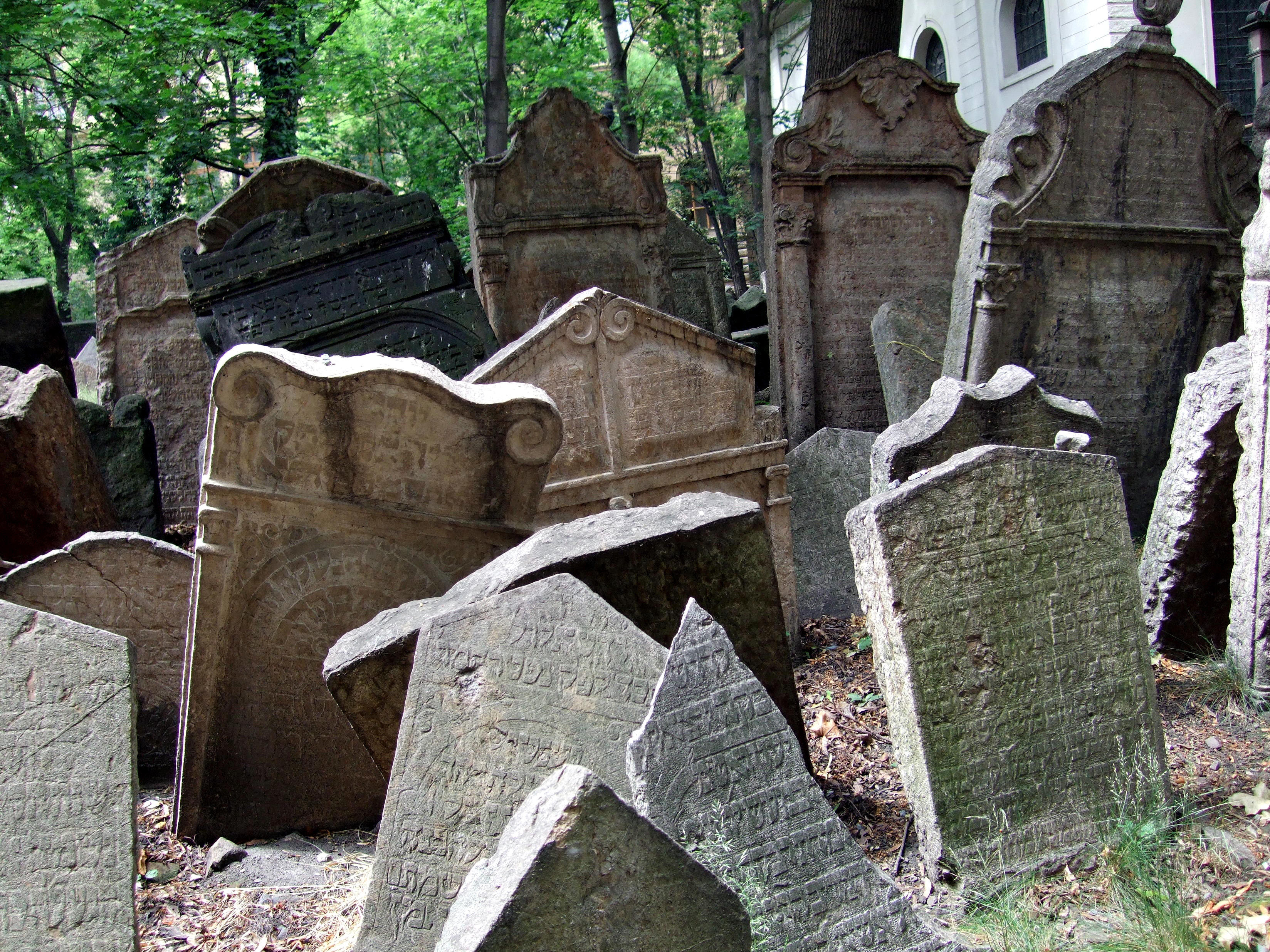 When
we passed into the cemetery, the sun had just come through a previously overcast
sky and the greenery surrounding the gravestones seemed to glisten. The cemetery
was established in 1439 and was used until 1787. I passed the grave of the
Maharal, its etched lettering still clearly visible after 400 years. Many
headstones had symbolic pictures or patterns that reflected that person’s social
status or occupation.
When
we passed into the cemetery, the sun had just come through a previously overcast
sky and the greenery surrounding the gravestones seemed to glisten. The cemetery
was established in 1439 and was used until 1787. I passed the grave of the
Maharal, its etched lettering still clearly visible after 400 years. Many
headstones had symbolic pictures or patterns that reflected that person’s social
status or occupation.
Various multi-colored small size birds flitted from gravestone to trees, to the ground. If so many birds enjoyed this venue, then it must be fertile ground. And for the first time, which I cannot explain, since I began the Jewish Museum tour, I felt relief—and repose. Amidst these ancient headstones, piled layer upon layer on top of each other because of space restraints, I felt I was among Jews. Their spirit seemed to rise and come to life above the ground.
As a Boomer, I was one year old when Israel was
declared a state, and it has always been in my consciousness as a Jew.
I’m optimistic about the future of Jewish life, and am not tied down to the
past. I feel no chains on me as a Jew, which was experienced by many of the Jews
facing Hitler, or the Communists who occupied Czechoslovakia until 1989.
As a Jewish American, I live a privileged life of choice—which synagogue to
attend, when and how to celebrate my Judaism. Somehow, naively, I wanted to
transport that sense of Jewish spirit here.
However, Hitler murdered 72,000 Czech Jews. That’s approximately the same number
of Jews living today in San Diego County. Imagine if a similar scenario took
place in San Diego. Let’s say all the Jews are taken away and disappear. What
would San Diego look like without Jews? What artifacts would the people who came
after us preserve? How would they choose what artifacts to exhibit? How would
the tour guides describe us? Would we appear to be a now-extinct, eradicated
group of people?
Today in the Czech Republic, there are three thousand affiliated Jews out of a population of twelve million. In Prague, there are about 1,500 Jews whose average age has dropped over the past few years from 80 to 57. There may be more Jews, but years of Nazi and Russian occupation has left many Jews hesitant to identify themselves openly.
There are two Kosher restaurants. There is a deli- style restaurant and a formal sit-down restaurant, The King Solomon. They are conveniently located near to one another, but when we visited on several occasions, we were either the only customers or there was one other customer there.
Encouraging news is that Chabad has a presence in Prague and runs both the deli and a children’s school. In addition to Orthodox synagogue options, there is also Beit Simcha, a small alternative Havurah group, Beit Praha,a Reconstructionist Jewish group, and a reform synagogue that offers services only for the High Holidays.
It appears to be a slow crawl back, but there are small signs of revitalization.
POSTSCRIPT—My husband and I left Prague wondering if there were any way could make a contribution to the growth of Jewish life in the Czech Republic. We had had a wonderful trip in so many ways, but the lack of a vibrant Jewish presence haunted us.
Then, as if by “beshert” a possible answer appeared on the flight back home from Prague. We had a chance meeting with Steven Sternfeld, a professor of Linguistics at The University of Utah. He was on his way back home from a three-week educational program sponsored by his university in the small, southwestern Czech town of Susice.
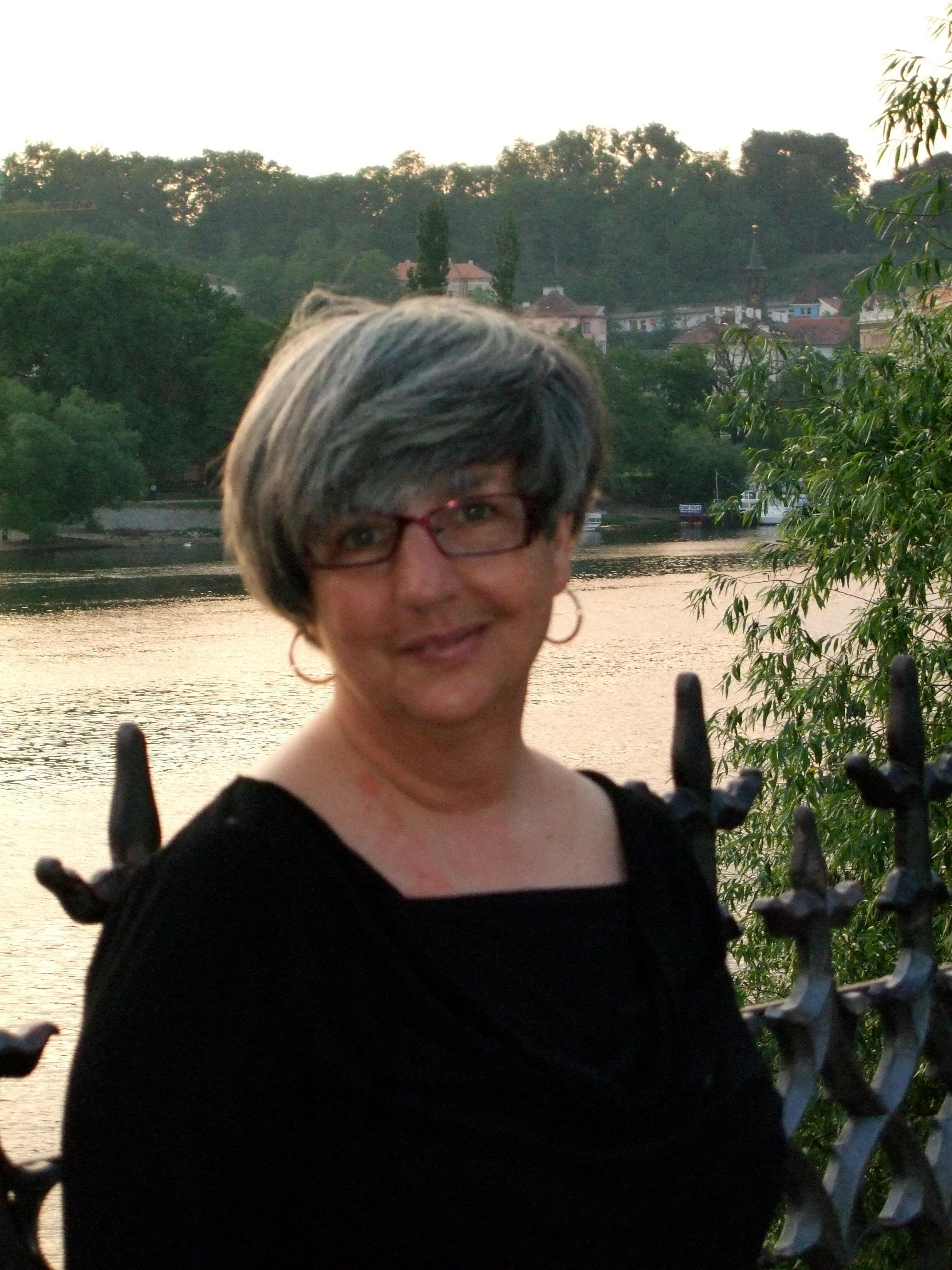 Student
interns, mainly students training to teach ESL, came there and boarded with
Czech families and participated in an English immersion program for local
students and residents. That would have been amazingly coincidental enough since
I am an ESL teacher, and had given some thought to teaching English in Eastern
Europe.
Student
interns, mainly students training to teach ESL, came there and boarded with
Czech families and participated in an English immersion program for local
students and residents. That would have been amazingly coincidental enough since
I am an ESL teacher, and had given some thought to teaching English in Eastern
Europe.
But as our conversation continued, he told us
about the project called The Hartmanice Memorial. Hartmanice is a small
synagogue near Susice that was destroyed during the Nazi occupation. This area
of Bohemia once had more than sixty synagogues. About two dozen survived, but
were turned into residential or industrial spaces by the Nazis or communists.
The Hartmanice Memorial reconstruction began in 2002 and the beautiful synagogue has just been refurbished as a living memorial to Czech, Jewish, and German reconciliation. There are now social, educational and cultural programs that show how these three ethnic groups got along very well before World War ll. There are also lectures on anti-Semitism and educational programs for children. It has also been declared a Cultural Heritage site, and has won architectural awards.
That seems like an already complete package, but the problem is that it’s a synagogue without Jews. Sternfeld is proposing setting up a network to interest, and inform Jews and Jewish communities worldwide to come to the site to visit, help develop programs, and hopefully spearhead a movement to have Jews come back to live, thrive, and practice Judaism there.
For more information on Hartmanice visit the website.
Our Jewish Museum tour already illustrated that refurbishing a synagogue and setting up cultural and educational programs does not necessarily mean the revitalization of a people. It will take living, breathing Jews to restore the soul of a decimated community. We’re on board. How about you?
Journeys, like artists, are born and not made.
A thousand differing circumstances contribute to them, few of them willed or
determined by the will-whatever we may think. —Lawrence Durrell


